#animal mimic
Explore tagged Tumblr posts
Text
today's mimic: zone-tailed hawk, buteo albonotatus
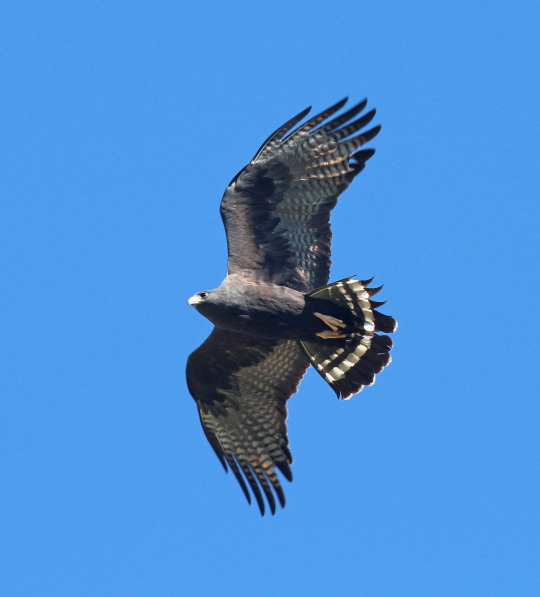
the zone-tailed hawk has been suggested to mimic turkey vultures, most obviously in their flight pattern: the hawks fly unusually with wings raised dihedrally, and will rock back and forth in a similar manner to turkey vultures. additionally, the silhouette and the shape of the flight feathers resemble a turkey vulture much more than other similar hawks. this is an example of aggressive mimicry, since turkey vultures rarely hunt animals, while the zone-tailed hawk is an active predator. its prey will be more likely to ignore the presence of the bird, believing it to be a harmless scavenger. the kettling behaviour of turkey vultures aids the zone-tailed hawk, as it can blend into large gatherings of vultures. although up close the two animals are very different, even experienced birders may have difficulty identifying a zone-tailed hawk from its deceitful silhouette and flight pattern.
model:

photo by roy lowe
flight pattern comparison:
youtube
youtube
#mimicposting#aggressive mimic#vertebrate mimic#animal mimic#visual mimic#zone-tailed hawk#buteo albonotatus#hawk#mimicry#ornithology#birds#birds of prey#animal facts#zoology#biology#sorry for the late post!#no video description
189 notes
·
View notes
Text
Yellowjacket-Mimicking Moth: this is just a harmless moth that mimics the appearance and behavior of a yellowjacket/wasp; its disguise is so convincing that it can even fool actual wasps

This species (Myrmecopsis polistes) may be one of the most impressive wasp-mimics in the world. The moth's narrow waist, teardrop-shaped abdomen, black-and-yellow patterning, transparent wings, smooth appearance, and folded wing position all mimic the features of a wasp. Unlike an actual wasp, however, it does not have any mandibles or biting/chewing mouthparts, because it's equipped with a proboscis instead, and it has noticeably "feathery" antennae.
There are many moths that use hymenopteran mimicry (the mimicry of bees, wasps, yellowjackets, hornets, and/or bumblebees, in particular) as a way to deter predators, and those mimics are often incredibly convincing. Myrmecopsis polistes is one of the best examples, but there are several other moths that have also mastered this form of mimicry.

Above: Pseudosphex laticincta, another moth species that mimics a yellowjacket
These disguises often involve more than just a physical resemblance; in many cases, the moths also engage in behavioral and/or acoustic mimicry, meaning that they can mimic the sounds and behaviors of their hymenopteran models. In some cases, the resemblance is so convincing that it even fools actual wasps/yellowjackets.

Above: Pseudosphex laticincta
Such a detailed and intricate disguise is unusual even among mimics. Researchers believe that it developed partly as a way for the moth to trick actual wasps into treating it like one of their own. Wasps frequently prey upon moths, but they are innately non-aggressive toward their own fellow nest-mates, which are identified by sight -- so if the moth can convincingly impersonate one of those nest-mates, then it can avoid being eaten by wasps.

Above: Pseudosphex laticincta
I gave an overview of the moths that mimic bees, wasps, yellowjackets, hornets, and bumblebees in one of my previous posts, but I felt that these two species (Myrmecopsis polistes and Pseudosphex laticincta) deserved to have their own dedicated post, because these are two of the most convincing mimics I have ever seen.

Above: Pseudosphex sp.
I think that moths in general are probably the most talented mimics in the natural world. They have so many intricate, unique disguises, and they often combine visual, behavioral, and acoustic forms of mimicry in order to produce an uncanny resemblance.
Several of these incredible mimics have already been featured on my blog: moths that mimic jumping spiders, a moth that mimics a broken birch twig, a moth caterpillar that can mimic a snake, a moth that disguises itself as two flies feeding on a pile of bird droppings, a moth that mimics a dried-up leaf, a moth that can mimic a cuckoo bee, and a moth that mimics the leaves of a poplar tree.
Moths are just so much more interesting than people generally realize.
Sources & More Info:
Journal of Ecology and Evolution: A Hypothesis to Explain Accuracy of Wasp Resemblances
Entomology Today: In Enemy Garb: A New Explanation for Wasp Mimicry
iNaturalist: Myrmecopsis polistes and Pseudosphex laticincta
Transactions of the Entomological Society of London: A Few Observations on Mimicry
#entomology#arthropods#lepidoptera#yellowjacket-mimicking moth#wasp-moth#clearwing moths#animal camouflage#myrmecopsis polistes#pseudosphex laticincta#pseudosphex aequalis#moths#insects#bugs#mimicry#evolution#hymenopteran mimics#defense mechanisms#animal facts#wasps#yellowjackets#moths are amazing#and wildly underrated
9K notes
·
View notes
Photo




Jumping spider mimic planthoppers in the genus Rhotana
Photo 1 by tenebrionidfan, 2 by gancw1, 3 by budak, and 4 by deeqld
#animals#curators on tumblr#insects#bugs#true bugs#planthopper#mimicry#jumping spider mimic planthopper#Rhotana#one nice bug
7K notes
·
View notes
Photo
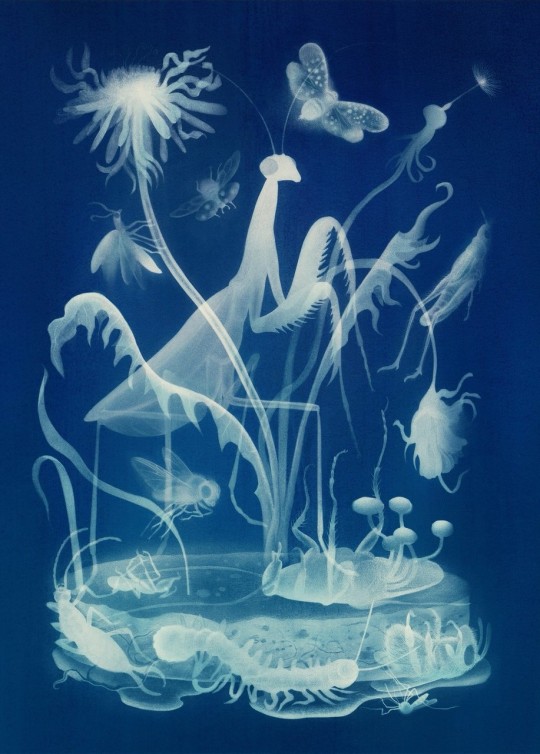
Armando Veve (American, b. 1989)
#upl#va#art#drawing#Armando Veve#animals in art#this isn't a cyanotype#the artist says :#The process was a bit layered for this one. In short I created graphite negatives of each insect and used the black and white data to#digitally expose a cyan-painted surface. I was trying to mimic the cyanotype process while also maintaining the texture in my other drawn wo#In a sense the work exists between drawing and photo.#---his comment about the work
15K notes
·
View notes
Text
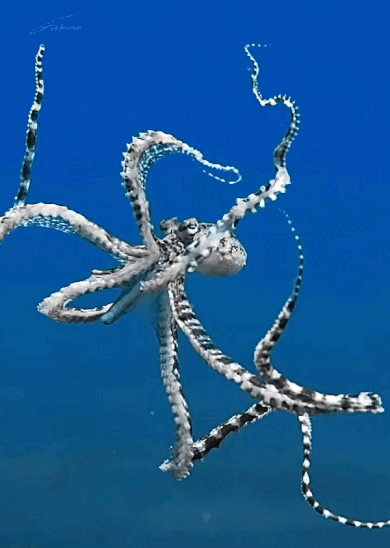
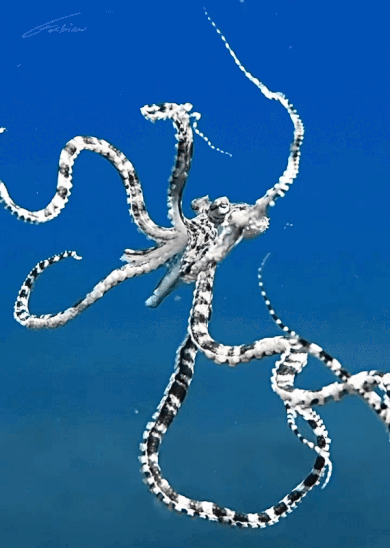
mimic octopus (thaumoctopus mimicus) | source
#stim#mimic octopus#thaumoctopus mimicus#sea creatures#sfw#black#white#blue#tentacles#molluscs#underwater#animals#ishy gifs#postish#oceans
14K notes
·
View notes
Text




[Day 326]
(WIP??? MAYBE??? idk if i will finish this HSAKJDKLAJI)
obsessed with joel's anime intro so i doodled smth but didnt have time for mumbo o7
#dddaily4sherin#iswips#isdoodles#hermitcraft#hermitblr#magic mountain#smallishbeans#impulsesv#skizzleman#geminitay#goodtimeswithscar#it would be fun to mimic anime styles tbh but i have no clue what to do with the bgs LMAO#ALSO THIS IS SO RUSHED SORRY FOR THE A THOUSAND MISTAKES JESUS
2K notes
·
View notes
Text

!! Lil guys !!
#bumfuzzled art#bumfuzzled animations#mha#tokoyami fumikage#dark shadow#I deleted like half the frames because I ran out of time mb guys. terrible planning.#and now for my regularly scheduled rambling#lil babies#they’re so eepy and so smoll#it’s their birbday#hc time: darkshadow does not need to breath but sometimes he’ll mimic the movements#1 because it makes him appear less scary and 2 because it’s calming for Tokoyami#kinda like the baby toys now that I think about it#on an animation related note:#I spend too much time animating darkshadow.#I just really like the effect but it’s very time inefficient#and I had to redo it when I took out frames so I basically did it twice…#for the record it’s in 8 fps but was intended to be 12 fps so it’s choppy#and not bouncy :/#I like my animations bouncy#edit: nvm I’m a dumdum and forgot to change the timing. it’s still in 12fps so it’s super fast.
619 notes
·
View notes
Text
Voice of the Hunted!
I'm doing more of this "formally showing my voice designs" stuff again.
Other Designs: Cheated/Contrarian/Cold/Paranoid/Smitten/Opportunist/Skeptic/Stubborn
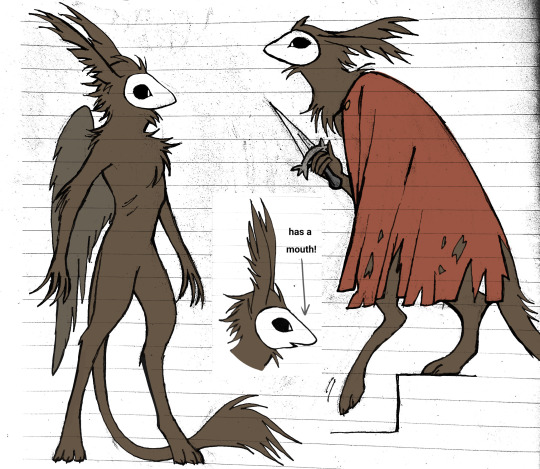
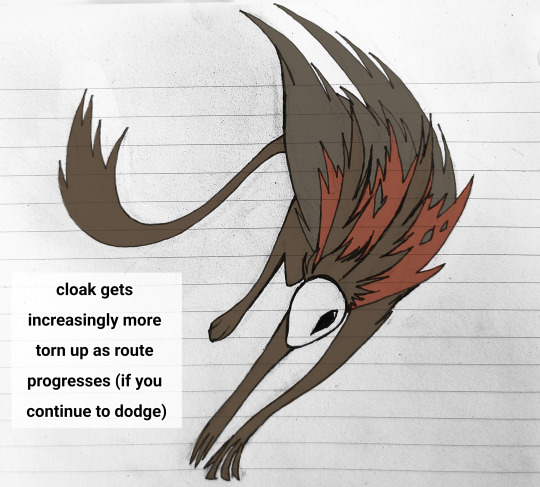
I wouldn't say Hunted is the *tallest* of my designs, but I do draw him as like, a basic Long Quiet design that's been stretched like taffy because I like the idea of Hunted looking like an "evolved" form of the Long Quiet - the hero that's been made into the prey. Also while I have drawn him mostly standing here, the second he gets down those basement stairs I imagine he's on all fours
Below the cut are the drawings without any text + the first time I ever drew Hunted!
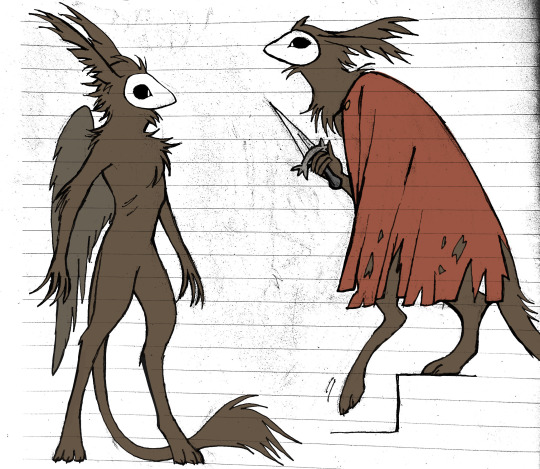
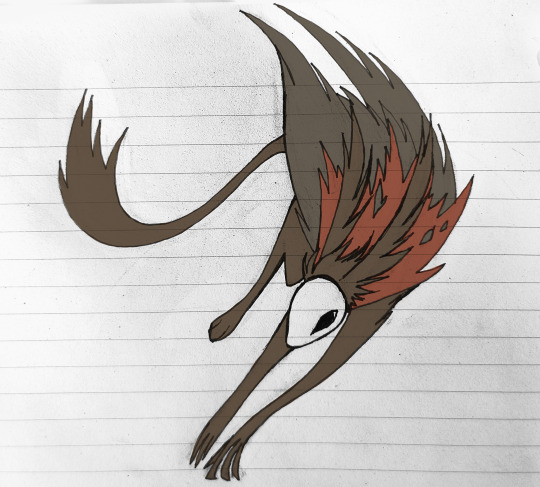
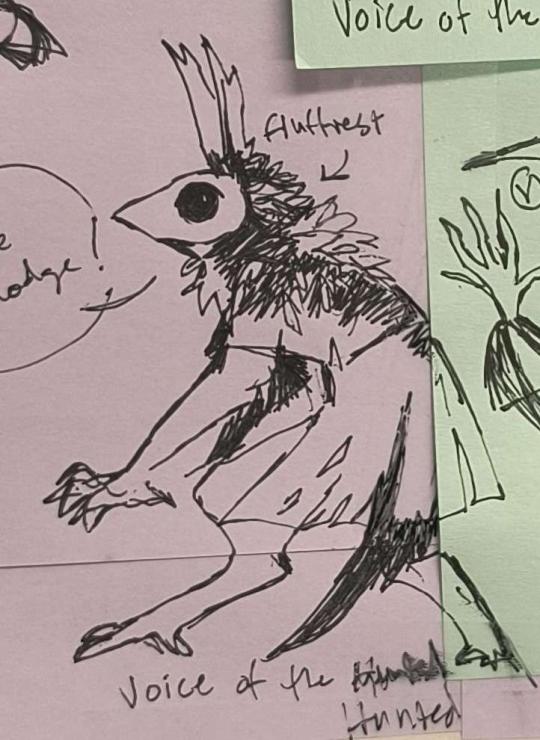
#stp#stp voices#voice of the hunted#slay the princess#I love drawing my design for him actually#because i can just look up any animal and have him mimic the pose#this design is definitely a balance between#“yeah that makes sense” and#“because I want to”#my art
563 notes
·
View notes
Text

Gray Catbird (Dumetella carolinensis), EAT A TASTY BERRY!!!, family Mimidae, order Passeriformes, Ohio River Islands National Wildlife Refuge, WV, USA
photograph by Michael Schramm/USFWS
540 notes
·
View notes
Text


Frieren & Mimic ; Frieren: Beyond Journey's End ☆ SEGA
#frieren#mimic#frieren mimic#sousou no frieren#snf#soso no frieren#frieren beyond journey's end#frieren at the funeral#frieren figure#sega#anime#anime figure#figure#figure collecting#anime figurine#figurine#anime collecting#scale figure#myfigurecollection#manga
229 notes
·
View notes
Text
today's mimic: mimic poison frog, ranitomeya imitator
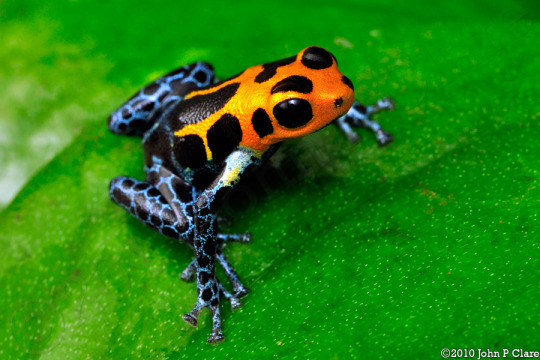
photo by john clare
the mimic poison frog, also known as the poison arrow frog or imitating poison frog, is notable for having many colour morphs that allow it to mimic multiple different species. the four different mimicking morphs are:
'varadero', which mimics the red-headed poison frog, ranitomeya fantastica
'striped', which mimics the lowland zimmerman's poison frog, ranitomeya variabilis
'spotted', which mimics the highland zimmerman's poison frog, ranitomeya variabilis
and 'banded', which mimics the summers' poison frog, ranitomeya summersi
the mimicry is used defensively, as this species, while toxic, is much less so than the species it mimics.
comparisons:

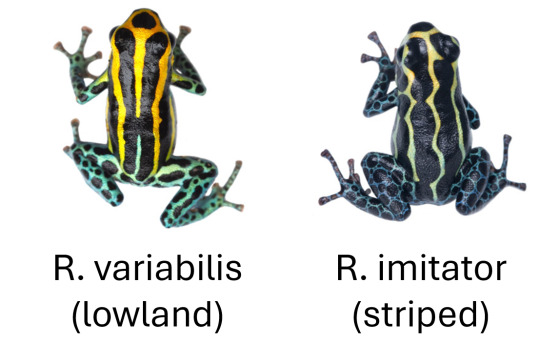
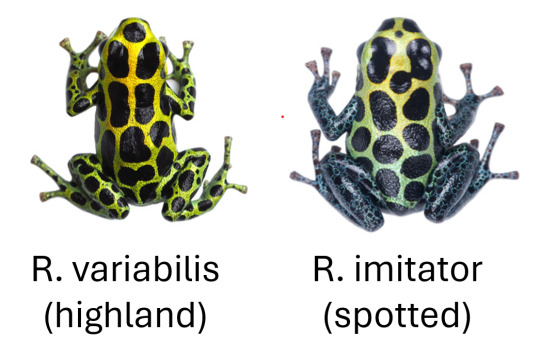

(comparisons created by me, images source here)
#mimicposting#defensive mimic#vertebrate mimic#animal mimic#visual mimic#mimic poison frog#ranitomeya imitator#frog#frogs#poison dart frog#mimicry#herpetology#amphibians#animal facts#zoology#biology
23 notes
·
View notes
Text
The Oriental Blue Clearwing Moth: these moths were regarded as a "lost species" for more than 130 years, until they were finally sighted again in 2013
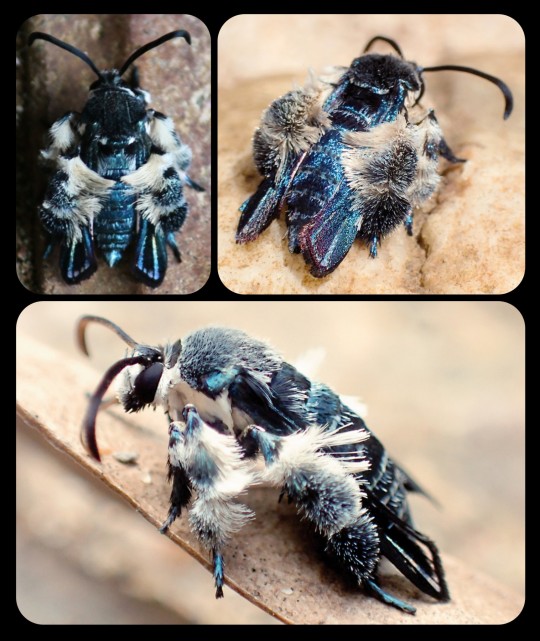
For more than 130 years, the Oriental blue clearwing moth (Heterosphecia tawonoides) was known only from a single, badly damaged specimen that was collected in Sumatra in 1887. There were no recorded sightings of this species again until 2013, when entomologist Dr. Marta Skowron Volponi unexpectedly found the moths feeding on salt deposits that had accumulated along the riverbanks in Malaysia's lowland rainforest.
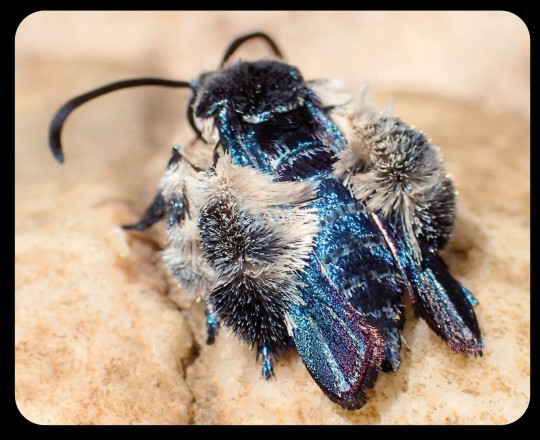
These moths were observed by researchers again in 2016 and 2017, and research indicates that the moths are actually bee-mimics, as they mimic the appearance, sound, behavior, and flight patterns of local bees. Their fuzzy, bright blue appearance might seem a little out of place for a bee-mimic, but those features do appear in several different bee species throughout Southeast Asia.
When the moths are in flight, they bear a particularly strong resemblance to the bees of the genus Thyreus (i.e. cuckoo bees, otherwise known as cloak-and-dagger bees), several of which are also bright blue, with banded markings, dark blue wings, fuzzy legs, and smooth, rounded antennae. The physical resemblance is compounded by the acoustic and behavioral mimicry that occurs when the moths are in flight.
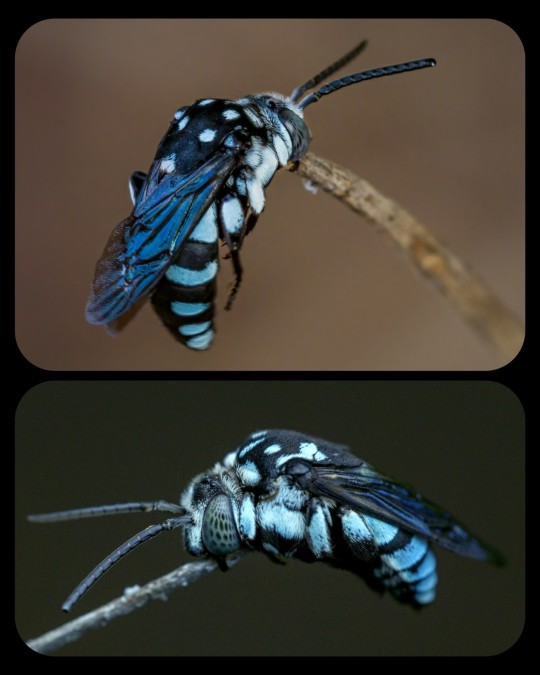
Cloak-and-Dagger Bees: the image at the top shows an Indo-Malayan cloak-and-dagger bee (Thyreus novaehollandiae) in a sleeping position, holding itself upright with its mandibles clamped onto a twig, while the image at the bottom shows a Himalayan cloak-and-dagger bee (T. himalayensis) resting in the same position
The moths also engage in "mud-puddling" among the various bees that congregate along the riverbanks; mud-puddling is the process whereby an insect (usually a bee or a butterfly) draws nutrients from the fluids found in puddles, wet sand, decaying plant matter, carrion, animal waste, sweat, tears, and/or blood. According to researchers, the Oriental blue clearwing moth was the only lepidopteran that was seen mud-puddling among the local bees.
Dr. Skowron Volponi commented on the unusual appearance and behavior of these moths:
You think about moths and you envision a grey, hairy insect that is attracted to light. But this species is dramatically different—it is beautiful, shiny blue in sunlight and it comes out during the day; and it is a master of disguise, mimicking bees on multiple levels and even hanging out with them. The Oriental blue clearwing is just two centimeters in size, but there are so many fascinating things about them and so much more we hope to learn.
This species is still incredibly vulnerable, as it faces threats like deforestation, pollution, and climate change. The president of Global Wildlife Conservation, which is an organization that seeks to rediscover "lost species," added:
After learning about this incredible rediscovery, we hope that tourists visiting Taman Negara National Park and picnicking on the riverbanks—the home of these beautiful clearwing moths—will remember to tread lightly and to take their trash out of the park with them. We also recommend that Americans learn about palm oil production, which is one of the primary causes of deforestation in Malaysia.
Sources & More Info:
Phys.org: Bee-Mimicking Clearwing Moth Buzzes Back to Life After 130 Years
Mongabay News: Moth Rediscovered in Malaysia Mimics Appearance and Behavior of Bees to Escape Predators
Journal of Tropical Conservation Science: Lost Species of Bee-Mimicking Clearwing Moth, H. tawonoides, Rediscovered in Peninsular Malaysia's Primary Rainforest
Frontiers in Zoology: Southeast Asian Clearwing Moths Buzz like their Model Bees
Royal Society Publishing: Moving like a Model - mimicry of hymenopteran flight trajectories by clearwing moths of Southeast Asian rainforests
Medium: Rediscovery in a Glint of Blue
re:wild.org: The "Search for Lost Species" Project
#lepidoptera#moths#heterosphecia tawonoides#oriental blue clearwing moth#entomology#insects#cute bugs#nature#animals#lost species#mimicry#evolution#bees#southeast asia#Malaysia#colorful moths#bee mimic#science
1K notes
·
View notes
Photo









Lichen-mimic orbweaver, Araneus seminiger, Araneidae
Found primarily in Taiwan and Japan
Photos 1-3 by muyaocraft, 4 by pochung, 5 by papilioshih, 6-8 by dhugallindsay, and 9 (for scale) by jamesmifan
#animals#curators on tumblr#bugs#arachnids#spider#orbweaver#lichen mimic orbweaver#Araneus#Araneus seminiger#mimicry#camouflage#one nice bug
3K notes
·
View notes
Text
just me going crazy . same old .
#chilaios#uhhh i dont feel like exposing this to other tags#ummm#honestly just a throwaway post before i finish my chilaios edit#it was meant to be a christmas edit but uh . christmas is no longer here 4 me#anwyays#i like 2 hc that laios likes to mimic ppl#idk am i projecting#(yes)#but Argh !!!! its cute ok !!!!!#i need to like rewatch the entire anime#i always find something new .... and today was one of those discoveries
278 notes
·
View notes
Text

When you just KNOW there is a Grimoire in there somewhere.
#sousou no frieren#frieren: beyond journey's end#frieren#cat cosplay#cosplay#cats#kitty#cats in costumes#cat#cats of tumblr#aww#cat costume#fan art#mimic#anime#fantasy
654 notes
·
View notes
Text


Submission from @excellentcollectionofwords
246 notes
·
View notes